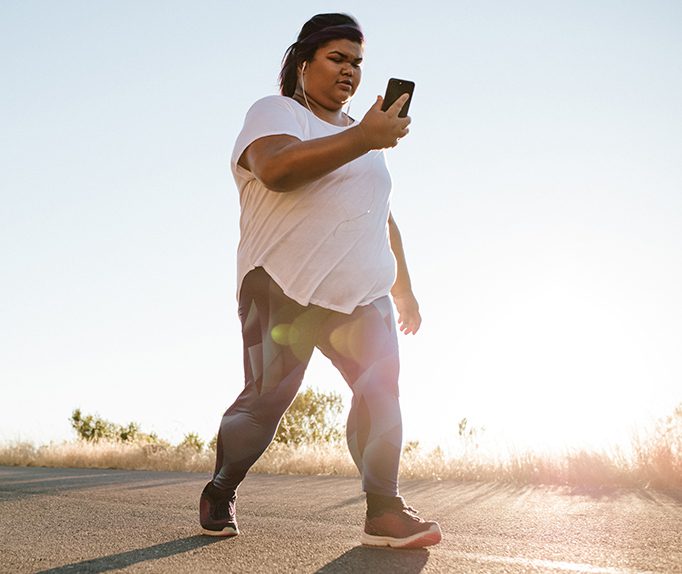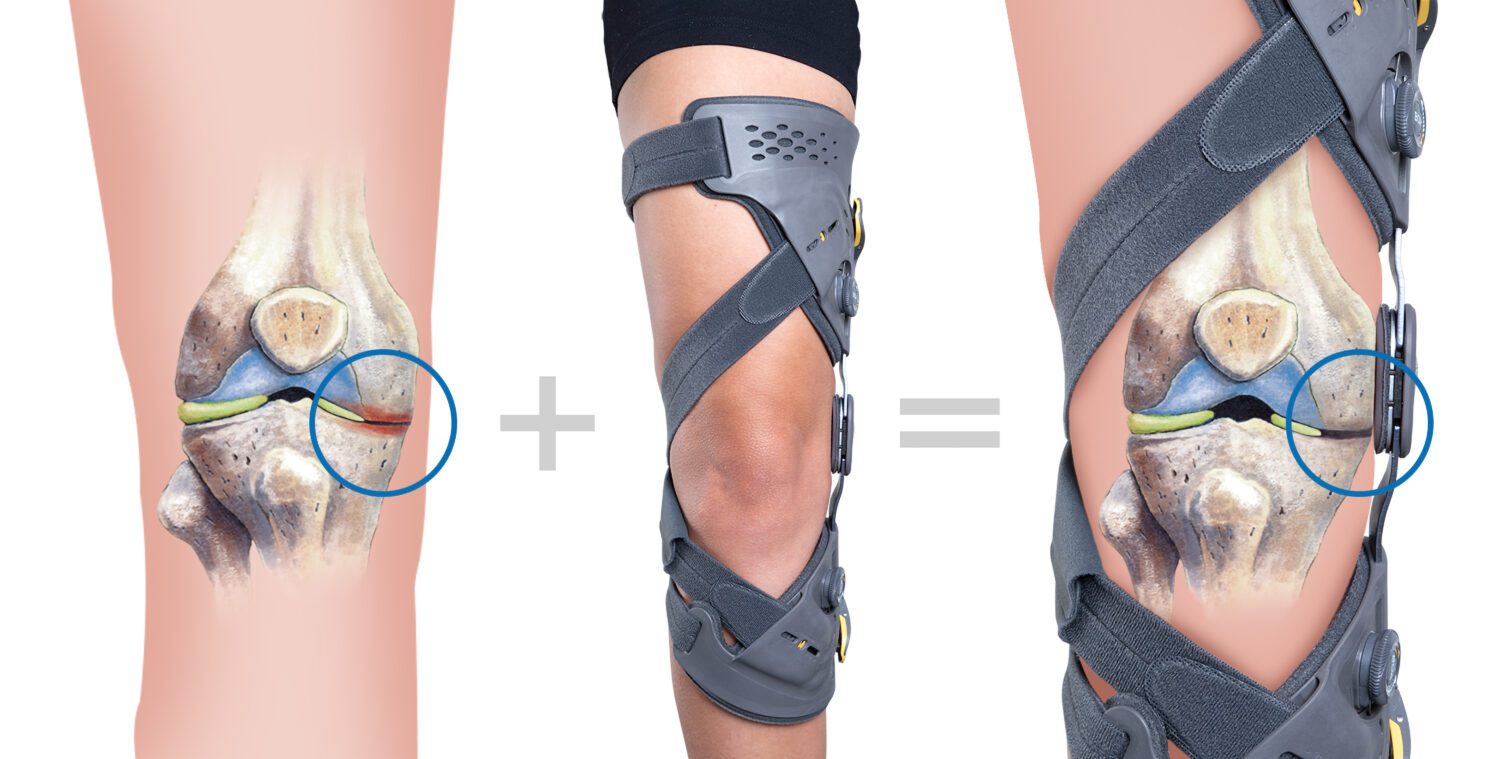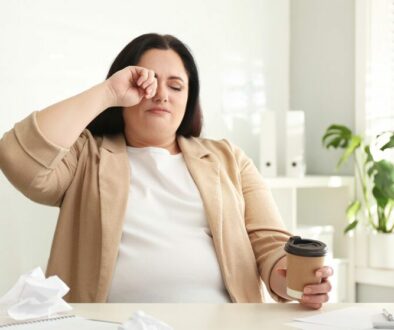Is surgery required for my knee pain?
Knee pain affects more people than some would think. Dr. Brad Dosher with CMC Orthopaedics puts it in perspective for us.
“According to the NIH about 25% of all adults suffer from severe knee pain, particularly people over 50 and it can really impair one’s day-to-day activities and rob them of their quality of life. People who suffer from severe knee pain often find it difficult to do things like standing from a seated position or playing with their grandchildren; things that they used to be able to do easily before the knee pain set in.”
So how can you stop the knee pain and get your life back? Do you need surgery? Do you need injections, physical therapy, or other conservative non-surgical treatments? Dr. Dosher provided us with the answers to these questions and much more.
“Most people end up seeing me because they’re noticing changes in their activities and daily living,” Dr. Dosher shared. “They’re noticing that they’re having difficulty completing tasks and doing simple day-to-day things. In patients over the age of 50, osteoarthritis is often a contributing factor in their knee pain. Osteoarthritis of the knee is the most common diagnosis I see and it’s a direct result of age. It’s wear and tear just like your tires going bald. The knee joint itself starts to wear out and then you start to have pain and other mechanical symptoms like locking, catching, and grinding”
Nonsurgical Treatment Options
While knee replacement surgery is one option to help relieve joint pain, you may feel like you’re either too young or not ready for a knee replacement surgery. Dr. Dosher explained that there are many nonsurgical treatment options that exist to help relieve knee pain, increase mobility, and improve your quality of life.
“With arthritis, you often see progressive muscle weakness, stiffness of the joints, and associated inflammation, and these all result in pain and reduced function. The goal of all of our treatments for knee arthritis, and hip arthritis for that matter, are to reduce these symptoms so that you can go about your day-to-day activities.
Dr. Dosher went into detail about how the team at CMC Orthopaedics manages the symptoms of knee pain. “We employ a team approach where we can utilize multiple different kinds of treatments. Sometimes, one treatment option is enough to manage your pain but for many people suffering from severe pain, we may need to utilize multiple treatments to effectively manage it. You can’t cure arthritis so none of these treatments will make your pain go away forever, so our goal is to get you as close to being pain-free as possible. To do that, we utilize our arsenal of treatment options to come up with the right plan to get you there.”
Modify your activity
Modifying your activities is important for managing your knee pain and it doesn’t require medication.
“I’m sure this sounds very obvious, but making modifications to how you do things can reduce your pain,” Dr. Dosher suggested. “For instance, if you like to run, maybe consider power walking or going to an elliptical machine, riding a bike, or some other type of low-impact aerobic exercise. Maybe adjusting your seat height can bring some relief when standing up or sitting down; avoiding lots of stairs and squatting. Think through the things you do throughout your day that cause pain, and we can talk through those and come up with ways to modify those motions and activities.”
Dr. Dosher recommended staying active when you have arthritic knees because it’s important to keep the stabilizing muscles around your knees strong, increase your range of motion, and avoid weight gain.
Weight Management
Excess body weight can significantly worsen knee pain, as it places added stress on the joint. Maintaining a healthy weight through a balanced diet and regular exercise can greatly reduce knee pain and may even slow down the progression of certain knee conditions, such as osteoarthritis.
“Weight loss can make a huge difference for those who have an elevated body mass index and who are over their ideal weight,” said Dr. Dosher. “Consider this, if you carried around an extra 50 pounds all day, how are you going to feel at the end of the day? Your body is going to be sore, you’re going to have aches and pains in areas you aren’t used to. Think about what that added pressure is going to mean for the joints in your lower extremities. If you were able to get rid of that weight, think about what that would do to alleviate the pain you are experiencing.”

“I mentioned before, the team approach we take in regard to knee pain. We have a great relationship with CMC Weight Loss. They offer clinical and surgical weight loss options and this approach has helped some of my patients effectively begin to manage their weight and also control their knee and hip pain.”
Physical Therapy
Another nonsurgical treatment for knee pain is physical therapy. It can be highly effective in managing various knee conditions. A skilled physical therapist will assess your knee’s condition and develop a tailored exercise program to strengthen the surrounding muscles, increase flexibility, and improve overall joint stability. The focus is on enhancing the knee’s support structure and range of motion, reducing pain, and restoring function.
“Physical Therapy won’t fix you overnight, just like weightlifting won’t give you muscles overnight. Our physical therapists create an organized, targeted plan that if you stick with it and give it a good shot, you will begin to notice a difference. You’ll feel stronger. You’ll feel more stable and comfortable. Physical therapy can also be really important if you think knee replacement surgery is in your future because if you have a poor range of motion before you replace your knee, that will be a big risk factor for having a poor range of motion after you replace your knee. The better physical shape your knee is in prior to surgery, the better your surgery results will be and the quicker your recovery.”
Knee Braces
Some people also find joint pain relief with braces. While arthritis itself doesn’t usually cause the knee to become unstable, the inflammation caused by arthritis can create a sensation of the knee giving out or being wobbly and unsteady.
“The role of a brace for an arthritic knee is to help unload the part of your knee that is the main source of pain,” explained Dr. Dosher. “Sometimes a simple compression sleeve or brace can help control the pain. However, for more severe cases, I often prescribe a larger brace that offers more support and changes the alignment of your leg meaning it forces you to put more weight on the part of your knee that doesn’t have arthritis.”

If prescribed a brace, Dr. Dosher encourages you to wear it all day or as much as you can tolerate. You also want to wear it when partaking in sports and other physical activities to ensure that you have less pain at the end of the day.
Medications
Over-the-counter pain relievers, such as acetaminophen or non-steroidal anti-inflammatory drugs (NSAIDs), can provide temporary relief from knee pain and inflammation. However, it’s essential to use these medications as directed and avoid long-term reliance on them, as they may have side effects if not used properly.
“Acetaminophen is something I like because it has relatively safe side effects and it’s cost-effective. In addition to that, anti-inflammatory medications have been shown to reduce the inflammation around your joints and certainly have significant success in reducing pain. I do want to remind you though that if you’re thinking of going on medication for your knee arthritis, make sure you check with your family doctor first to ensure that it’s not going to interfere with any of your other medications.”
Opioid medications are no longer a go-to treatment for knee pain. According to a recent study published in Arthritis Research and Therapy, opioids may not be as effective as once thought for reducing pain and disability associated with knee osteoarthritis. Instead, opioids can cause unwanted side effects such as dizziness, nausea, constipation, sleepiness, and addiction. “I always try to steer clear of narcotic medications,” revealed Dr. Dosher. “They are highly addictive and can have some extreme side effects and honestly, we’ve become much more sophisticated at targeting pain and can generally achieve equal or better pain relief through other methods.”
Topical creams are another option to manage pain and they are available over-the-counter or are prescribed by your physician. “Topical treatments are applied to the outside of the knee,” Dr. Dosher explained. “They’re very common and one of the benefits of these creams is that the medication inside is typically absorbed through the skin at a very low rate. The risk for these is very low too. So if it is effectively reducing your pain and it’s not causing any other problems, you can’t go wrong with using these.
Injections
Joint injections insert a variety of helpful substances directly into your joints or the surrounding ligaments and tendons. They can reduce inflammation, manage your pain, and may have the potential to heal supporting structures.
“A very practical and effective approach for reducing the amount of pain someone is experiencing is injections,” stated Dr. Dosher. “For the management of osteoarthritis, there are two main classes. There are corticosteroids which are powerful anti-inflammatories that are delivered directly to the affected area, reducing swelling and discomfort. These will work for short-term to mid term relief, but frequent use is discouraged because they have some side effects like cartilage damage. Generally, it is safe to repeat injections into the knee every 3 months or so.”
“Then there are viscosupplementation injections like hyaluronic acid. These are sometimes referred to as gel injections or visco injections. These are thought to lubricate the knee, provide some cushioning, and enhance joint movement.”
“I think it’s important to understand that these treatments can be effective yet the benefits aren’t permanent and they aren’t the same for every person. My patients have had varying experiences. Some get weeks of relief, some get years, and everything in between. Everyone is different so don’t feel bad if you try something and it doesn’t work for you or if something that was successful for you, doesn’t work for your friend. There is also newer evidence that the viscosupplementation injections are less effective than we previously thought.”
What can I do if these treatments don’t help my knee pain?
Non-surgical knee pain treatments offer a wide range of options for individuals seeking relief without resorting to surgery. From physical therapy and low-impact exercises to innovative therapies like PRP injections, these treatments provide hope for those struggling with knee pain.
“Many people find that a combination of these conservative treatments is enough to manage their osteoarthritis, but it’s a degenerative condition,” Dr. Dosher stressed. “You can’t heal arthritis. It won’t go away. These treatments are simply helping you manage the symptoms of arthritis. If these options aren’t enough to keep you active and able to manage your pain, then it could be time to sit down and have a serious conversation about joint replacement surgery.”
Dr. Brad Dosher and our team at CMC Orthopaedics specialize in knee replacement surgeries. Joint replacement involves removing the damaged portion of the joint and fitting an artificial joint in place. It can be a very successful option if you are suffering from severe arthritis. Many people who choose joint replacement surgery are surprised to find that their pain is drastically reduced after the procedure, and they continue to feel better as recovery progresses.
CMC Orthopaedics is here to help you find effective ways to manage your osteoarthritis pain. Call us today at 843-347-8041 or use our convenient online appointment request form.

Dr. W. Brad Dosher
Fellowship trained in Sports Medicine and Shoulder Surgery at Vanderbilt University
Dr. W. Brad Dosher is a fellowship-trained orthopedic surgeon specializing in sports medicine and shoulder surgery. Born and raised in Amarillo Texas, Dr. Dosher graduated Summa Cum Laude from Texas Tech University with a bachelor’s degree in Biology. He received his MD from the Texas Tech University Health Sciences Center School of Medicine and completed his Orthopedic Surgery Residency at the UT Health Science Center at Houston. During his residency, Dr. Dosher trained at the busiest trauma center in the nation and worked with the Houston Texans, Houston Astros, Houston Rockets, and University of Houston Athletics. Dr. Dosher completed his Sports Medicine and Shoulder Fellowship at Vanderbilt University.




